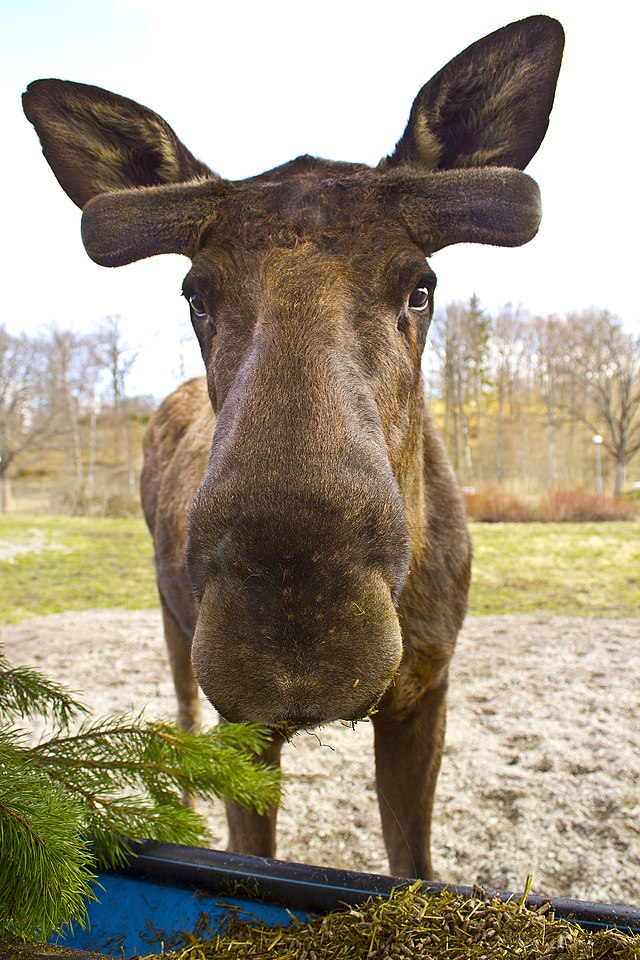Britain’s Lost Wildlife – Exploring 5 Extinct Species
Did you know that 1 in every 6 species is at high risk of becoming extinct in the UK? To be more precise, according to the State of Nature’s 2023 report, animal species have declined by 19% since 1970, which makes Great Britain one of the most nature-depleted countries in the world.
Today, as many as 151 species are reported to have become extinct in the United Kingdom. The number is large, and it’s impossible to explore all of those mammals, reptiles, fish, or birds in a single article. That’s why we decided to focus on 5 of them for now and help you understand why British wildfire has become a hostile environment for them.
1. Eurasian Lynx

There was a time when the Eurasian Lynx wandered all around the UK territories, from the north to the south. But these stealthy hunters became extinct in Britain about 1300 years ago. An Eurasian Lynx was an apex predator that mainly hunted deer and smaller mammals. Unfortunately, deforestation in British wildlife during medieval times declined deer populations, which also affected the Eurasian Lynx.
Even though this animal is extinct, it’s still pretty much appreciated in British pop culture. In fact, lynx is associated with a keen vision and insight into British culture. Even more — thanks to their keen senses, the Eurasian Lynx is often considered a symbol of luck in games of chance. As a result, sometimes you can even notice these animals on online slot machines – such as Wild Linx by Playtech – offering high payouts and superior winning chances.
Interestingly, there have been some conversations about the possibility of reintroducing the Eurasian Lynx to British wildlife in order to restore balance in the UK ecosystem.
2. Apple Bumblebee

Not only animals, but some insects have also become extinct in Britain over the years. Apple Bumblebee is one of them. This insect isn’t as widely recognized in Britain as other species of bees. It was a part of the British ecosystem 1.5 centuries ago, specifically in the Kent region.
According to the official statistics, currently, there are 24 species of bumblebee in the UK and 2 species, Cullum’s bumblebee and Apple bumblebee, have become extinct. The reason why the apple bumblebee has disappeared is linked to habitat loss and agricultural intensification.
3. Common Tree Frog

The common tree frog is a relatively newly extinct species in the UK. It was once a part of the New Forest area in southern England. But in the 1980s, it became extinct due to habitat loss and degradation. Although small colonies of this species still live in Devon and Hampshire, a common tree frog is still considered extinct in most of British wildfires.
The thing that makes a Common Tree Frog so unique is its loud noise, which is especially sharp at night. In fact, it’s considered the noisiest frog in all of Europe. A while ago, there were some attempts to re-establish populations of common tree frogs in the UK. However, it posed a threat to other species of tree frogs, which is why the idea was unfortunate from the beginning.
4. Elk

The Eurasian elk, also known as the Moose, is a member of the deer family that disappeared from Britain about 8000 years ago. Some of the reasons for its extinction are climate change, vegetation, and, of course, human activities. The last species of elk in the UK was the Irish elk, which survived until the end of the last ice age. After that, the climate started to warm and their habitat changed significantly. Once their woodlands were replaced by dense forests, Irish elk started to disappear from the UK.
Unlike other extinct animals, in the case of elk, attempts to reintroduce its herd weren’t successful. This means that British elk or Alces alces won’t return to the UK landscapes.
5. Grey Whale

And the final animal on our list of extinct species in Britain is everyone’s favorite grey whale. Currently, grey whales live in the Pacific Ocean and migrate from the north to the west coast of North America throughout the year. Thousands of years ago, they also lived in the Atlantic Ocean, in the British territories. The last live grey whale in the UK was spotted in Devon in 1610.
The most popular theory about the extinction of grey whales in Britain is related to significant changes in ocean temperatures. As a result, their migration routes changed and the whales had to move from the Atlantic to the Pacific Ocean, where the sea temperatures were lower.
Final Thoughts
We don’t know yet for sure where the conversations about these extinct species will actually lead us, but at least they serve as reminders that our natural world needs to be protected at all costs. These five species that we discussed are only a few of the multiple animals that are under the threat of extinction in Britain. That’s why we should all engage in sustainable practices as much as we can.

Nato is a content writer and researcher with a background in psychology who’s eager to explore the wonders of nature. As a travel enthusiast and animal lover, she hopes to inspire others to discover and cherish the beauty and importance of the natural world.







